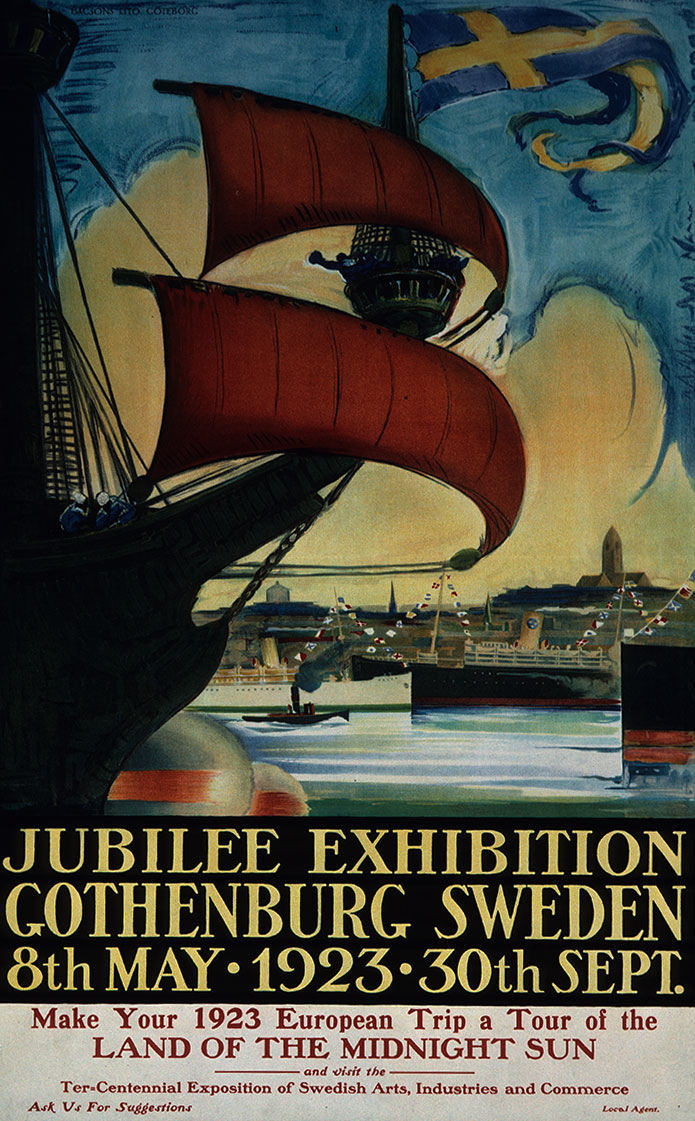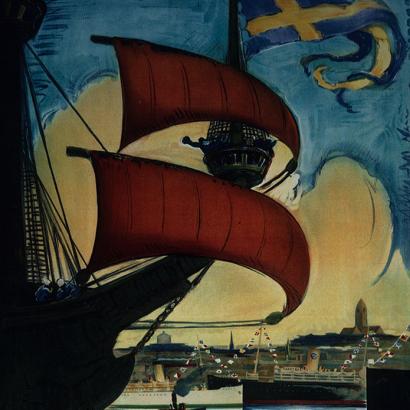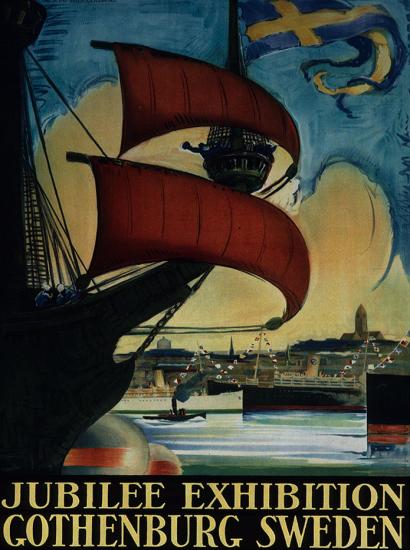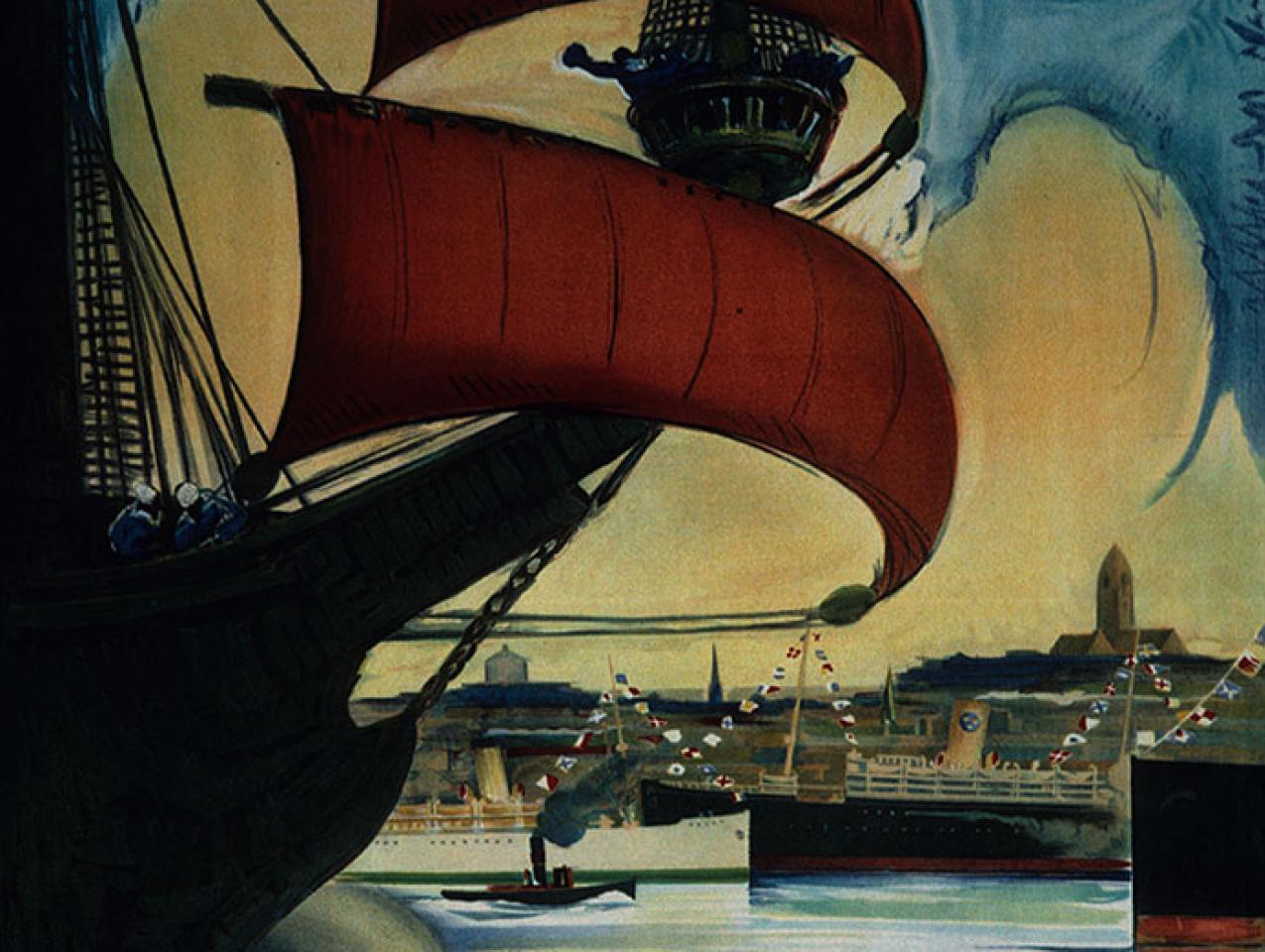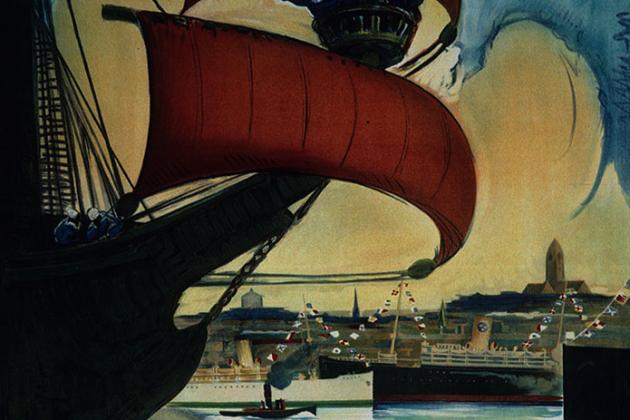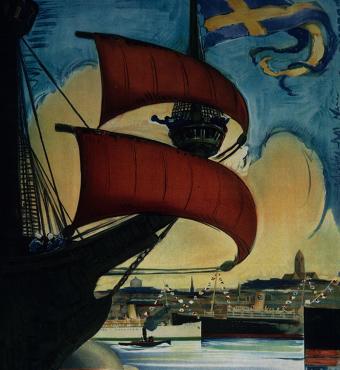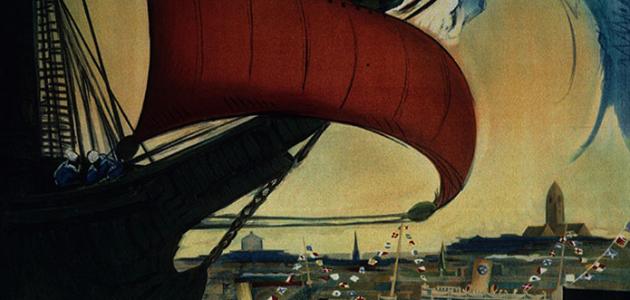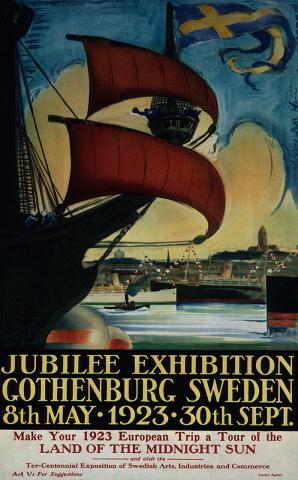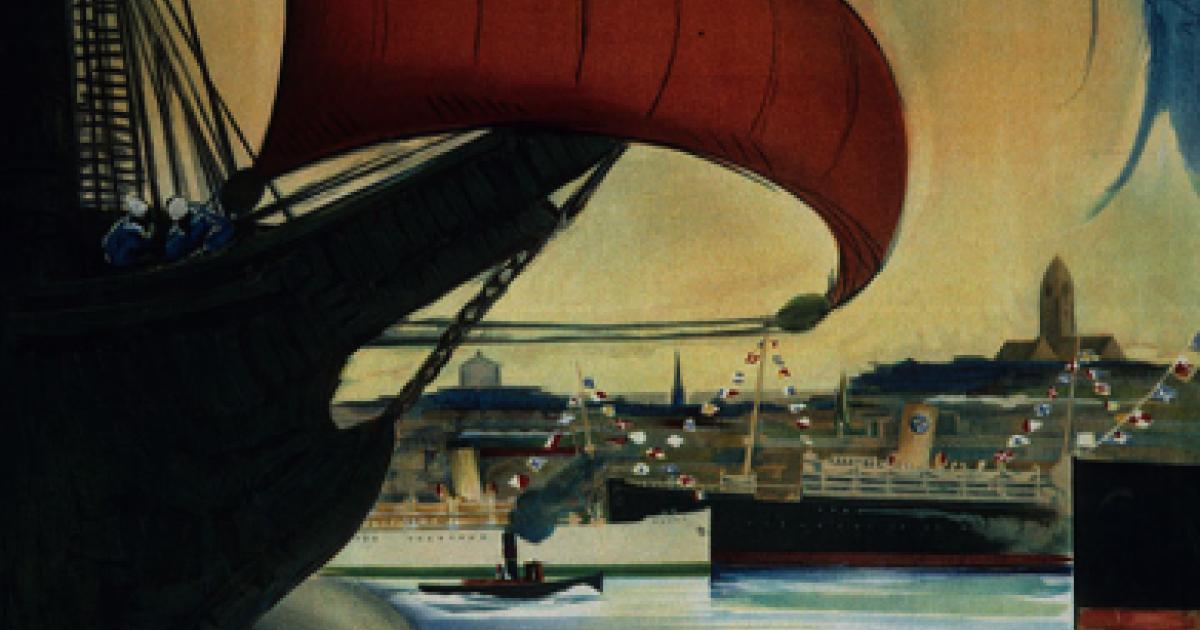- History
- Revitalizing History
International organizations can fade or grow in importance, depending on how they meet shifting challenges in their history. NATO has had its ups and downs since its founding on April 3, 1949, but there can be no question that it has developed today into the most formidable military alliance since the Grand Alliance (the United States, Great Britain, and the USSR) during World War II.
It has done so by being fully integrated into the postwar foreign policy of the increasingly prosperous and internationally ambitious U.S. and by meeting the challenges Washington has faced from its major rivals in the international system, the Soviet Union and today, China excepted, the Russian Federation. From the beginning of the negotiations between the original twelve signatories of the Washington Treaty, NATO’s founding document, the U.S. drove the goals and policies of the Atlantic Alliance. This was even codified in Articles 11 and 13 of the Treaty, which explicitly single out the U.S. government as the repository of the original instruments of ratification and of the documents of intent by individual countries to withdraw from the alliance, which, despite some shaky moments, has never happened.
Intersecting with the immediate postwar goals of the United States in achieving peace, stability, and economic recovery in Europe, were the hostile actions of Moscow without which, from the outset, NATO was inconceivable. The blowback experienced by the Kremlin came in the form of the growth and development of a powerful and committed Atlantic Alliance. The brutal suppression of democratic parties and politicians in Eastern Europe in 1947, culminating in the shocking Czechoslovak communist coup in February 1948, was an important part of the background, as were the violent activities of the Greek communists that triggered Harry Truman's policies of containment articulated before Congress in March 1947.
In the spring of 1948, Stalin ordered his troops to interfere with Western access to Berlin, followed by a general blockade of the western sectors of the city in the second half of June. Stalin's ultimate goal was to prevent the formation of a Western German state, which had become Washington’s answer to the nettlesome “German question”; at the minimum, he hoped to force the Western Allies out of Berlin. A full-scale international crisis ensued, one that threatened outright warfare between the former Allies. Not only did Stalin underestimate the ability of Washington (and London) to stand up to his bullying and to find a “no war, no peace” solution to the crisis through the Berlin Airlift, but he completely miscalculated the effects of the blockade on the Germans.[1]
By the end of the crisis in May 1949, a new consciousness of a free “West Berlin” had been forged among its population in facing down Soviet intimidation and threats. (One could easily make a similar argument about the strengthening of Ukrainian identity as a free country in resisting Putin’s war of aggression.) The formation of NATO, in short, was blowback to Soviet aggression on the continent, not just from the United States, but also from the West Europeans, who responded to real and potential Soviet aggression by intensifying their attachment to democracy and the Atlantic Alliance.
The expansion of NATO into West Germany in 1955 also represented in part the need to face down Soviet intimidation, in this case the overwhelming preponderance of Soviet ground forces attached to the Group of Soviet Forces in Germany that threatened to pour through the Fulda Gap, the most direct route to France and the English Channel. Once the official occupation of West Germany ended in May 1955, Washington needed to harness the West German state and its potential military manpower to its security zone in Europe, while defending against threats by the Soviet military in Central Europe.
Meanwhile, West Germans, despite internal opposition and hostility on the part of the French, desperately wanted to anchor themselves and their Bonn democracy in the West by entering NATO. Article 10 of the NATO treaty guaranteed open accession to those countries invited to join.[2] Greece and Turkey sought and gained accession in February 1952, reflecting NATO’s interests in the Eastern Mediterranean and Black Sea, while resisting Moscow’s pressure on the Straits, and Washington’s gratitude for both countries’ important contributions to Allied efforts in the Korean War.
The expansion of NATO following on the heels of the collapse of communism in Eastern Europe in 1989, and the implosion of the Soviet Union in 1991, remains controversial. In this case, Moscow experienced a form of historical blowback, the consequence of its aggressive actions in Eastern Europe over the course of the previous fifty plus years. The Visegrad Three, Poland, Czechoslovakia, and Hungary, initiated the process of expansion using every bit of leverage they could muster to convince the initially hesitant U.S. administration to right historical wrongs—the Soviet takeover of Eastern Europe; the deportations from Eastern Poland, 1939-41, including the murder of 22,000 Poles at Katyn; the crushing of the Hungarian Revolution of 1956, the Prague Spring in 1968, and so on. Binding their countries to NATO, they argued, would protect them and their new democracies from inevitable Russian revanchism in the future and secure NATO’s eastern flank.[3]
Once those countries were admitted into NATO in March 1999, the door was opened to the Baltic countries of Estonia, Latvia, and Lithuania, which had a similar and equally justified litany of historical complaints about Russian depredations during and after World War II, as they were twice forcibly absorbed into the Soviet state. In the case of the Baltic countries, and eventually Ukraine, as well, Moscow not only experienced blowback for its wrongdoings, but also “the Revenge of Empire,” the deep resentment of those nations that had been incorporated against their will and at great loss to their peoples into the Russian Empire and the Soviet Union.[4]
NATO’s expansion to a European continent “whole and free”—no longer just an alliance of North Atlantic and West European nations—was completed in the main with the admission of most of the remaining East European and Balkan countries into the alliance in 2004, 2009, 2017, and 2020. Potential future members are Sweden (Turkey has just indicated its readiness to accede to admittance along with the other member states), Bosnia-Herzegovina, Georgia, and Ukraine. Finland’s entry into NATO that took place in April 2023 is one of the most important, given its 830-mile border with Russia, its attachment to Western values, and its historical experience of fighting for its independence when threatened by Moscow. Since 1991, Finland had worked increasingly closely with NATO; nevertheless, its actual admission into the ranks of the Alliance was the direct result of Putin’s war of aggression against Ukraine, another self-imposed defeat suffered by the Kremlin as a consequence of its own misplaced policies. This means of this writing that since 1949, NATO’s membership has grown from twelve to thirty-one countries in nine rounds of enlargement. Along with Finland, Sweden, with its modernized armed forces and defense industries, will make thirty-two and essentially bottle up Russia in a NATO-controlled Baltic Sea and help assure the security of the Baltic states.
NATO agreed in 2008 at the Bucharest Summit that Ukraine, at “The Gates of Europe,” would become a member of NATO.[5] It also agreed that Georgia would become a member but was soon sobered by Russian military aggression in Southern Ossetia and Abkhazia, both formally part of Georgia, about which NATO could do next to nothing. Ukrainian interest in NATO appeared to fade when European Union membership appeared more realistic and attainable in the fall of 2013. But that effort, too, was squelched by Moscow, prompting the Euro-Maidan demonstrations and violence in the winter of 2013–2014. The Russian seizure of Crimea and then the Donbass in the spring and summer of 2014, accompanied by armed conflict between Russia and Ukraine, settled into an uneasy stalemate until February 24, 2022, when Russia launched an all-out attack on Ukraine, seeking to remove the government of Volodymyr Zelenskyy and threatening the country with “de-Nazification,” essentially de-Ukrainianization.
NATO officials and individual Allies began working with Ukraine’s armed forces and armaments industry already in 2014. Especially since the February 24 invasion, NATO countries, led by the United States, have been supplying Ukraine with tens of billions of dollars of weapons, munitions, intelligence support, and military hardware. F-16 fighter jets are next on the docket as Ukrainian pilots are being trained by Danish and Dutch air force advisors this summer. The blowback experienced by Moscow is extreme; its brutal and foolhardy war of aggression against Ukraine has only increased the Ukrainians’ determination to fight, strengthened the unity of the country, and bolstered the willingness of NATO to come to Kyiv’s aid. It is not true that the Russian armed forces are fighting NATO in the Donbass, as claimed by Moscow’s television propagandists.[6] It is the case that the NATO allies and NATO itself are extensively engaged with advising and materially aiding the Ukrainians.
Will the NATO summit to be held in Vilnius on July 11-12 admit Ukraine into NATO or set conditions for joining after the war? There has been and will be strong arguments against doing so now, despite the strong support from some of Ukraine’s East European NATO neighbors, Poland and the Baltic states in particular. Though highly supportive of Zelenskyy and Kyiv, the Biden administration has to this point been very restrained about admission to NATO, as have most West European governments. Policy experts argue back and forth about the wisdom of Ukraine’s entry into NATO, much as they did about the East European and Baltic nations after the fall of communism.
In the 1990s, the issue was how much should the West force a resentful Moscow into a corner, and couldn’t NATO find a way to cooperate institutionally with the Russian government and draw the Kremlin into the new European security architecture? NATO tried hard and made some hopeful progress during the Yeltsin era, but the effort ended in failure. Moscow’s extreme sensitivities to being threatened by NATO remain the major argument against Ukraine’s admission. Putin’s threats of using nuclear weapons and stationing tactical nuclear weapons in Belarus have injected worried tones into Western policy debates about Ukraine joining NATO even after the conclusion of the Russo-Ukrainian war. Of course, given Article 5 of the NATO Treaty, which obliges members to defend any ally under attack, admitting Ukraine into NATO before the end of the war would oblige the American and European militaries to join the fight against Russia, something that few NATO Allies are ready to venture.
The NATO Secretary General, Jens Stoltenberg, has stated that Zelenskyy will be the first guest at the Vilnius meeting, and NATO will do everything it can to make Ukraine a part of NATO without broaching the issue of membership now.[7] There will be a new NATO-Ukraine Council “where Ukraine will be equal to NATO Allies.” NATO’s door is open to Ukraine and Ukraine “will become” a member of the Alliance. Military cooperation will intensify as will the interoperability of NATO “standards, doctrines, equipment” with the Ukrainians. The flow of funds and weapons will continue at an accelerated pace. NATO will also deepen its commitment to joint planning “in a way we haven’t seen since the Cold War.” But for Stoltenberg, the bottom line remains: Although the Allies agree that one day Ukraine will join NATO as a member state and they strive to bring Ukraine closer to the alliance, “We’re not going to discuss an invitation at the Vilnius summit.”[8]
Through its war of aggression against and war crimes in Ukraine, Russia has suffered severe blowback in the forms of a brave and determined Ukrainian enemy at war and a focused and resourceful NATO alliance supporting Kyiv. As a result, Putin himself faces a grave internal crisis of unknown proportions. NATO has evolved yet again, its mission growing, its membership increasing, and its capabilities deepening. It is hard to predict when the war in Ukraine will end and how the peace will be secured. But it is not hard to predict that NATO, with the United States at its helm, as it was in the beginning, will shape the future of the international order.
[1] See my chapter on the Berlin Blockade in Norman M. Naimark, Stalin and the Fate of Europe: The Postwar Struggle for Sovereignty (Harvard University Press, 2019), pp. 157-195.
[2] Article Ten has been interpreted by NATO as follows: “NATO’s door remains open to any European country in a position to undertake the commitments and obligations of membership, and contribute security in the Euro-Atlantic area.” “Enlargement and Article 10,” April 12, 2023.
[3] See the argument about East European agency in Ronald D. Asmus, Opening NATO’s Door: How the Alliance Remade Itself For A New Era (Columbia University Press, 2002). Asmus was a U.S. government official leading up to the expansion. For a counterargument, which questions Washington’s willingness to go along with the East Europeans in seeking full admission, see M. E. Sarotte, Not One Inch: America, Russia, and the Making of Post-Cold War Stalemate (Yale University Press, 2021).
[4] See Ronald G. Suny, The Revenge of the Past: Nationalism, Revolution, and the Collapse of the Soviet Union (Stanford University Press, 1993).
[5] Serhii Plokhy, The Gates of Europe: A History of Ukraine (Basic Books, 2015), p. xxi. Plokhy writes here: “Europe is an important part of the Ukrainian story, as Ukraine is part of the European one. Located at the western edge of the Eurasian steppe, Ukraine has been the gateway to Europe for many centuries.”
[6]Vremya Pokazhet, host Artem Sheinin, Channel 1, June 29, 2023.
[7] Stoltenberg has just signed on for an additional tenth year as NATO Secretary-General, which will ensure continuity in the alliance’s Ukraine policy.
[8] NATO, “Press conference by NATO Secretary General Jens Stoltenberg following the meeting of NATO Ministers of Defence in Brussels.” Last Updated: June 16, 2023.







